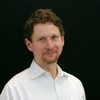A team of scientists working out of Stanford University have developed a technique that virtually maps the predicted ground movement and shaking of earthquakes, basically telling us how bad quakes are going to be for the surrounding communities. Their research focused on Los Angeles, where they learned that the next big one to hit the San Andreas Fault is going to be a whole lot worse than we thought. The study was published today in the journal Science.While the findings for LA are interesting enough on their own (16 million people live there after all), the cool thing about their work is that the technique could be used in a selection of other places around the world too; one of the scientists gave the examples of the San Francisco Bay Area, Tokyo, Mexico City, and Seattle. The reason it’s more useful in some places than others is because of how the virtual quake mapping works.In a nutshell, the team was able to build computer models of quakes because, aside from when a quake actually shakes the ground, there's another, continuous source of seismic waves. It’s called the ambient seismic field, and it's generated by the oceans’ waves sloshing around the planet. The ambient seismic field is not a new discovery—the scientific community has been aware of it for about 100 years—but it used to be considered a pain in the ass because it made quakes more difficult to measure.What’s changed is the technology able to detect the waves, which are really really small in comparison to the seismic waves a quake generates. The new detection technology is able to isolate certain useful waves, which allowed Denolle's team to put together a picture of how they moved and create a virtual map. The seismic waves of an earthquake, though much bigger, would be expected to act in a similar way.The team's predictions are a bit scary in the case of a big quake (magnitude 7 or higher) hitting Los Angeles. If a big quake hit a certain place on the San Andreas Fault, the seismic activity could travel about 60 miles north and really cause some damage. In LA’s case, the seismic waves are able to travel that far north because of a sort of geological tunnel, made of primarily of sand. Making things worse is the fact that LA sits right on top of what basically amounts to a sandbox. One of the scientists on the team suggested imagining a block of foam with a round hole filled with pudding or gelatin. When you shake the foam, the gelatin will shake around, but the block of foam will remain static. The city's on top of the gelatin.It might therefore be time to reconsider building codes and regulations in the area, which are based on prior experiences with quakes—there hasn’t been one in that spot in a long, long time (which isn’t to say it couldn’t happen tomorrow).Other cities also find themselves in similar geological basins, and the scientists added that one advantage of their technique was that it's inexpensive, which could make it useful for predicting quakes in developing countries.
Advertisement
